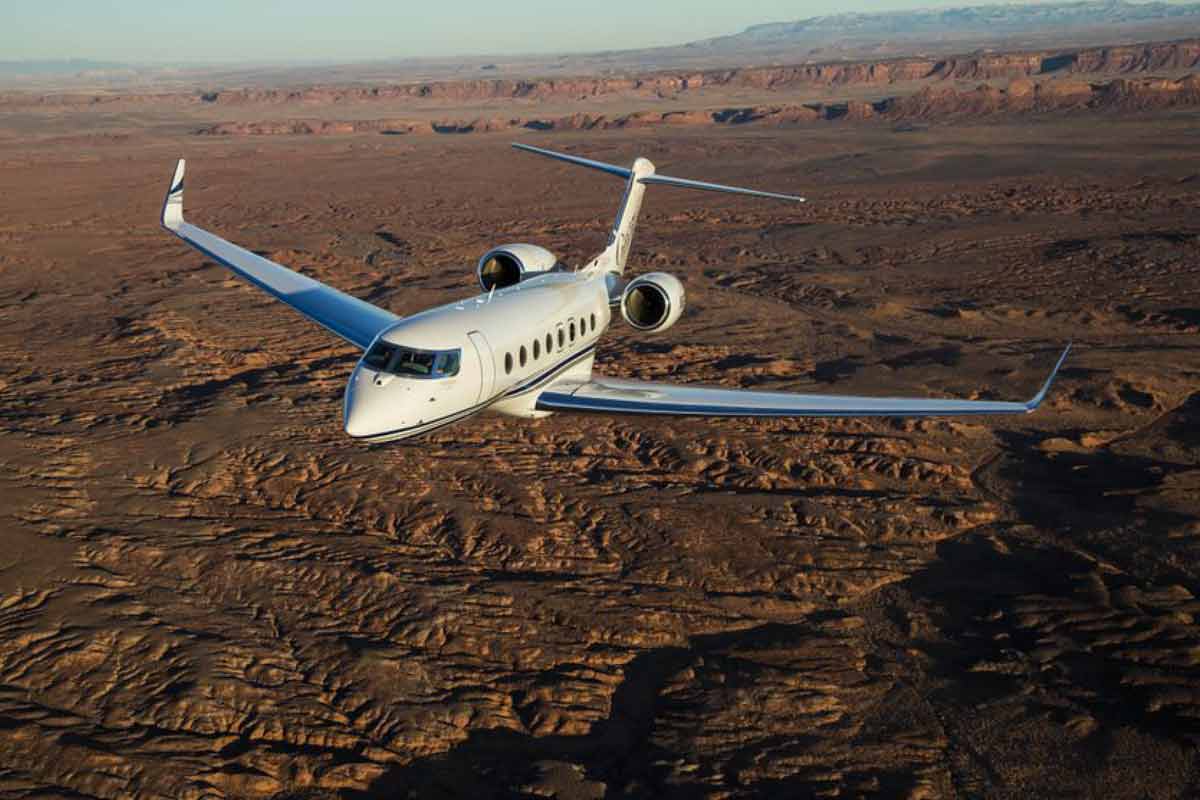Amid the global influx of high-net-worth and ultra-high-net-worth individuals in the region, the private jet industry is seeing increasing interest for both purchases and rentals.
While global markets are increasingly leaning towards private jet rentals, high-net-worth individuals in the Middle East still favour aircraft ownership, though a gradual shift is emerging, according to industry experts.
This trend persists even as the global cost of living crisis puts pressure on luxury spending around the world, according to a recent report by World Economic Outlook, the forecast for global growth five years from now – at 3.1 per cent – is at its lowest in decades.
“Many of clients have the appetite for full aircraft acquisition. In fact, aircraft sales and acquisitions is driving a significant part of our business,” Mark Hardman, CEO, RightJet said in an exclusive interview with Arabian Business.
However, Youssef Mouallem, Executive Vice President – International at Vista, observed a significant shift in preferences. “We have observed a significant shift in demand for our VistaJet and XO brands in recent years, particularly in regions like the Middle East, where business leaders and UHNWIs are increasingly prioritising flexibility over the fixed commitments of ownership models.”
He believes that many are “moving away from the complexities and high fixed costs” associated with owning jets and are instead turning towards rentals.
“This offers a tailored approach, where clients can access the right aircraft for their travel needs without the financial burden or downtime often associated with ownership,” he said.
The decision between ownership and rental largely depends on individual usage patterns and requirements. Aircraft ownership offers unique advantages, including constant availability and personalisation with dedicated crew and customised amenities “Your aircraft, your way,” Hardman said citing the benefit of “The aircraft being always available to you with your crew and your bedding.”
However, Mouallem argued that while “full control” might be a benefit of owning jets, this can often lead to underutilisation and inefficiencies, especially when the plane is grounded.

“While ownership offers exclusivity, control and prestige, it comes with high fixed costs, operational complexities, and the risk of underutilisation. Additionally, when an aircraft is grounded for maintenance, it disrupts travel plans – a major inconvenience for time-sensitive business leaders. Owned aircraft may also not be suited for every trip, particularly when larger or smaller aircraft are needed, or when travelling to remote regions,” he said.
Market dynamics differ significantly based on aircraft type. Heavy or ultra-long-range aircraft operate in a different pricing segment compared to charter services, making direct cost comparisons challenging.
While profitability exists in certain market segments for owners, financial considerations are not always the primary driver of purchase decisions. Hardman said that “there are one or two sweet spots in the market where an owner can make money, but the financials are not always the only or key factors.”
“Chartering mitigates drawbacks by offering a wide range of aircraft for every trip, ensuring availability and eliminating the logistical headaches of ownership. For many, the flexibility and ease of access outweighs the traditional appeal of ownership,” Mouallem said.
Despite the continued strong ownership market in the region, charter clients “significantly outweigh” aircraft owners. This has led to new opportunities in the charter sector, with new companies entering the market, though Hardman suggested that there still room for growth “under the right model.”
Experts suggest that ultimately the decision between owning a jet or chartering one comes down to one key factor – flight frequency.

“Ownership makes financial sense if you are flying upwards of 500 hours per year, as the fixed costs of maintenance, staffing, insurance, and management are then offset by frequent usage,” explained.
For those flying below the 500-hour-per-year threshold, he advised against ownership, citing “high fixed costs” as the primary reason.
Data suggests that rather than a shift away from ownership, the Middle East private aviation market is seeing growth across both segments, with different solutions catering to varying client needs and preferences.
“The global private aviation industry has seen a contraction over the past year, following several years of double-digit growth, which was never going to be sustainable in the long term,” Mouallem said.
Private jet demand trends
According to a recent report published by The Middle East & North Africa Business Aviation Association (MEBAA), Dubai South has seen an increase in the number of private jet movements by 7 per cent year-on-year in the first few months of 2024.
The growth in private jet demand in UAE is in line with wider regional trends with the market valued at $566 million, expected to grow to $943 million by 2029.
In response to growing demand in the region, Victor, a subsidiary of Serenity Aviation Holding launched the world’s first Arabic private jet charter application, Arabian Business reported in December.

Since establishing its headquarters in Abu Dhabi last year, the company experienced 166 per cent growth from UAE clients. The app aims to appeal to the growing market amid the influx of high-net-worth individuals (HNWIs) drawn to the UAE.
“The Gulf region, with its growing economies and dynamic business landscape, presents an ideal environment for the expansion of on-demand private jet charter services,” said Toby Edwards, co-CEO of Victor.
“From bustling metropolises to remote outposts, the demand for efficient air travel solutions is on the rise as heads of state, diplomats, entrepreneurs, executives, and high-net-worth individuals seek seamless connectivity and ultimate comfort,” he added.
Data from WingX revealed that private jet departures from the GCC region have increased by 76.6 per cent during 2023 versus 2019.
“While ownership will remain relevant for certain individuals and corporations, the ability to charter jets on demand is likely to be the dominant model in the future of private aviation,” Mouallem concluded.





